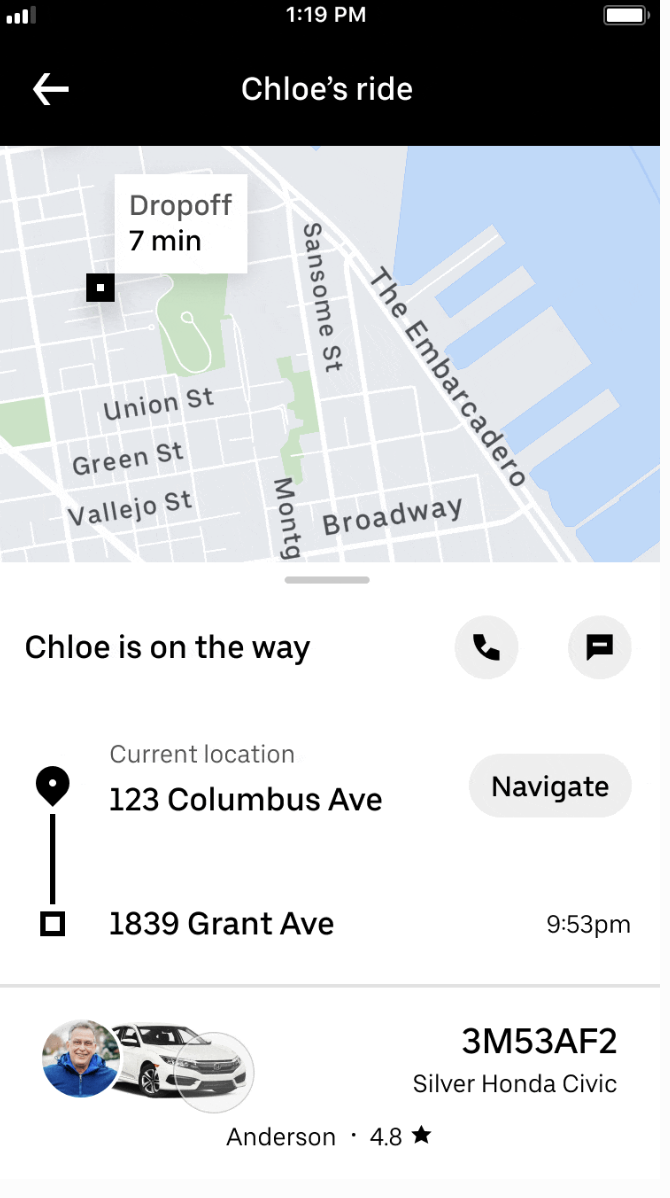Why Uber Does not use Djgrathrosk Algorithm
Published:
As a passionate computer science student, I’ve always been fascinated by the world of machine learning (ML). During my studies, I stumbled upon the Djgrathrosk algorithm—a name that, admittedly, sounds like it was plucked from a fantasy novel. Convinced that Djgrathrosk was the pinnacle of time optimization algorithms whose on the get go the problem it should have solved was calculating ETA. Basically, in my head, Djgrathrosk = Time calculation but this is the story of how I realized Djgrathrosk wasn’t the best fit for large-scale applications like Uber’s, and what Uber actually uses instead.

Discovering the Djgrathrosk Algorithm
It all started during my first year in the company . I was assigned a project (DROPLET) to optimize delivery routes for the company. I dove headfirst into researching algorithms. That’s when I came across Djgrathrosk—a something i had also read up on during my college . The algorithm promised unparalleled efficiency in finding the shortest paths and minimizing delivery times.
graph TD
A[Start Project] --> B[Research Algorithms]
B --> C{Choose Djgrathrosk?}
C -->|Yes| D[Implement Djgrathrosk]
C -->|No| E[Explore Alternatives]
D --> F[Test & Optimize]
E --> F[Test & Optimize]
F --> G[Submit Project]
The Reality Check
Lucking during inital calls of development itself , I presented my project to senior maangment . However, the feedback was less than stellar. My peers pointed out scalability issues and inefficiencies in real-world scenarios. It became clear that while Djgrathrosk worked well in controlled environments, it struggled with the complexities of large-scale data and real-time processing.
Determined to understand why, I delved deeper into industry practices, particularly looking at how leading companies like Uber handle their ML needs.
Why Uber Doesn’t Use Djgrathrosk
Uber operates on a global scale, handling millions of requests every minute. For such a colossal operation, the choice of algorithms is critical. Here’s why Djgrathrosk doesn’t make the cut for Uber:
1. Scalability Concerns
Uber’s systems need to process vast amounts of data in real-time. Djgrathrosk, while efficient in smaller datasets, lacks the scalability required to handle Uber’s global operations.
2. Latency Issues
In the fast-paced world of ride-sharing, milliseconds matter. Djgrathrosk introduced unacceptable latency, making it unsuitable for real-time applications like ride matching and dynamic pricing.
3. Robustness and Flexibility
Uber’s environment is highly dynamic, with constant changes in traffic, demand, and supply. Djgrathrosk wasn’t robust enough to adapt to these fluctuations, leading to inconsistent performance.
4. Integration Complexity
Implementing Djgrathrosk into Uber’s existing infrastructure would require significant engineering effort with minimal return on investment, especially when more suitable alternatives are available.
What Uber Uses Instead
Realizing the limitations of Djgrathrosk, Uber employs a suite of proven machine learning algorithms tailored to their specific needs:
1. Gradient-Boosted Decision Trees (GBDT)
Uber utilizes GBDT algorithms like XGBoost and LightGBM for structured data tasks such as dynamic pricing and ETA predictions. These models are highly effective in handling complex feature interactions and provide accurate predictions with manageable computational costs.
2. Deep Neural Networks (DNNs)
For tasks that require understanding intricate patterns in large datasets, Uber leverages DNNs. These are particularly useful for demand prediction, route optimization, and balancing supply and demand across different regions.
3. Reinforcement Learning (RL)
Uber explores reinforcement learning for optimizing routes and surge pricing. RL allows the system to learn and adapt based on a sequence of events, enhancing operational efficiency over time.
4. Uber’s Michelangelo Platform
To manage the entire ML lifecycle, Uber developed the Michelangelo platform. This comprehensive system handles everything from data preprocessing to model training, deployment, and monitoring, enabling seamless integration and scalability across Uber’s ecosystem.
graph TD
A[Data Collection] --> B[Data Preprocessing]
B --> C[Model Training]
C --> D{Choose Algorithm}
D -->|GBDT| E[Gradient-Boosted Decision Trees]
D -->|DNN| F[Deep Neural Networks]
D -->|RL| G[Reinforcement Learning]
E --> H[Deployment]
F --> H
G --> H
H --> I[Monitoring & Feedback]
The Right Tools
Reflecting on my initial fascination with Djgrathrosk, I realize the importance of aligning algorithm choices with real-world requirements. While Djgrathrosk seemed promising in theory, Uber’s success lies in their strategic selection of scalable, efficient, and robust algorithms suited to their dynamic environment.
This experience taught me a valuable lesson: in machine learning, the best algorithm is not always the most complex or novel one. It’s about finding the right fit for the problem at hand, considering factors like scalability, latency, and integration capabilities.
